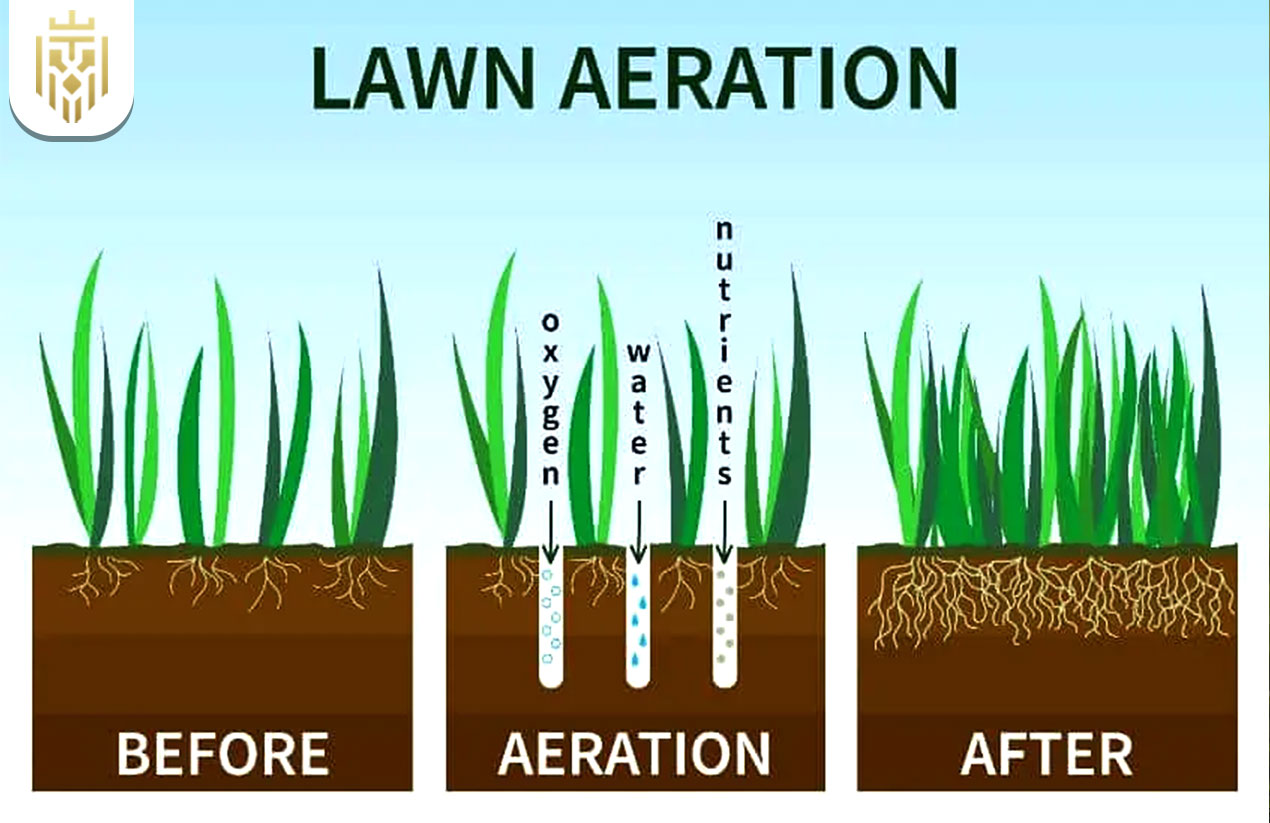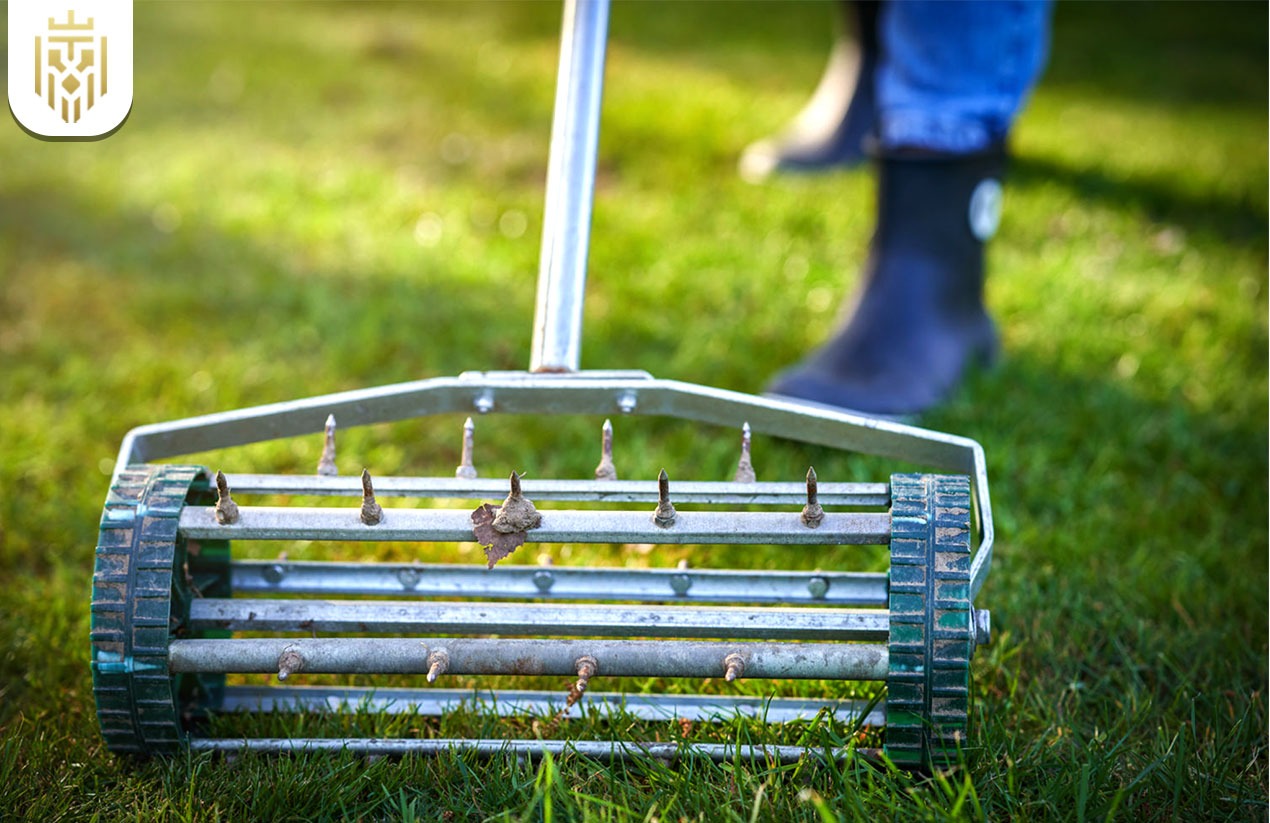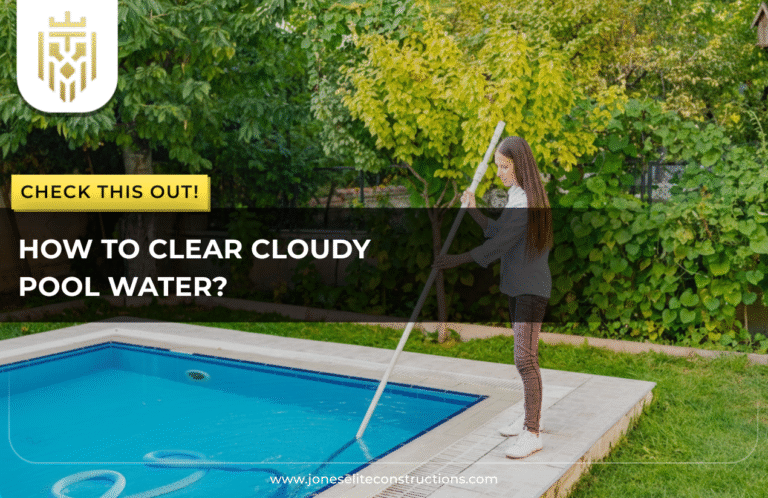What Is Lawn Aeration?
Lawn and garden aeration is a process in which big or small holes are perforated in the soil to allow air, water, and nutrients to trickle down into the grass roots. The lawn, over time, gets compacted due to foot traffic and the aggravation of weight on it by machinery or due to natural settling.
This mass of compaction prevents the growth of roots, thereby weakening the grass and blocking water from sinking deeper into the soil. Aeration of your lawn will, therefore, relieve this compaction and will allow the grass to have adequate breathing room so that it can grow thick, lush, and healthy.
Why Should You Aerate Your Lawn?

Aerating your lawn isn’t just another chore—it’s an essential part of lawn maintenance that directly impacts the long-term health of your turf. Whether you’re dealing with patchy spots or looking to enhance the overall look and strength of your yard, here’s why aeration matters.
-
Improves Soil Drainage
Soil with compaction causes water to sit on the surface. The pathways created by aeration will enable water to pass to the lower layers of soil, thus reducing runoff. It also improves overall drainage.
-
Promotes Stronger Grass Roots
Aeration creates pathways of air in the soil to encourage the roots to go deeper instead of spreading out across the soil surface. Deeper rooting is what makes the lawn more resistant to drought and easier to maintain.
-
Enhances Nutrient Absorption
Fertilisers or natural nutrients in the soil go to work, reaching only as far as the roots do. Aeration assures that your grass makes full nutrient usage from each feeding.
-
Reduces Soil Compaction
The soil beneath your lawn becomes compacted due to your regular activity; this limits root growth and blocks water movement. Aerating shatters such compaction, letting the soil breathe once more.
-
Prepares Lawn for Fertilization
If fertilizing is on your agenda, doing an aeration ahead of time will make such an act more effective by making sure the nutrients are able to find their way into the soil deeply and with even distribution.
When to Aerate Lawn?
It depends on the Lawn grass type; cool-season grass like Fescue or Kentucky Bluegrass should be aerated in early spring or in the fall. Aerate late spring through early summer if you have a warm-season grass: Bermuda or Zoysia. Scorching hot or dry weather is definitely not a good time to aerate, as stressed-out grass just doesn’t pull through. Ideally, the soil should be moist, not too wet or too dry, because that would lead to unnecessary damage to your lawn instead of doing any good.
How to Aerate Lawn?

Lawn aeration doesn’t require professional help in most cases. With the right tools and preparation, it’s a straightforward task that can yield major improvements.
-
Test Soil Moisture
Before beginning the process, it is essential to check on the moisture of the soil. The ground should be moist enough so that the aerator will penetrate with ease. Water the lawn a day prior if the soil is too dry.
-
Choose the Right Lawn Aerator
In choosing an aerator, it is important to note that there exist basically two types of lawn aerators: spike aerators and plug (core) aerators. Generally, plug aerators are the more effective type because they do take out soil cores and thereby reduce compaction from that standpoint, while the other just pokes holes.
-
Mark Obstacles
Mark sprinkler heads, buried lines, and other obstacles with flags so as not to damage these while aerating.
-
Aerate the Lawn
Make passes with the aerator in straight, overlapping lines over your lawn. Areas subjected to heavy traffic or seriously compacted should be run upon more than once. Leave the plugs on the surface to break down naturally to return nutrients to the soil.
-
Fertilize the Lawn
This is also a perfect time for fertilizing post-aeration since the holes created allow nutrients to leach deep into the soil, giving the grass a good boost in its recovery.
-
Post-Aeration Care
Water well after aerating and do not mow for a couple of days. Resume regular maintenance in a week, and, in the next few weeks, you will be rewarded with lush,thick green grass.
What to do after Lawn Aeration?
Aerating your lawn is just the beginning. To make the most of the process, what follows is just as important as the aeration itself.
-
Seed Your lawn
Post-aeration is the time to undertake over seeding if your lawn has bare patches or if you want to encourage a bit more growth. The holes created during aeration provide rather nice sites for grass seeds to settle within the soil, which improves germination and ensures that the roots establish well and deeply.
-
Water Your Lawn
Keep moist soil after aeration-especially after seed application-water right after the aeration process is finished and then keep the soil moist for 2 or 3 weeks.
-
Fertilize Your Lawn
This fertilization opportunity is made even better with all that loosening about, opening up the surface layer into the root zone, where nutrients can then penetrate deeper, fully absorbed by the root system, resulting in healthier, rapid growth.
-
Mow Your Lawn
If you have over seeded, do not mow until the new grass reaches a height of about 3 inches. For regular, established lawns, wait at least a few days after aeration before mowing to give the soil time to settle and recover.
-
Protect Your Lawn from Foot Traffic and Pets
After aeration, the soil is in a weakened state, while young seedlings are very much delicate. Reduce foot traffic on the lawn, keep animals off, and avoid placing any heavy furniture on it for at least a couple of weeks.
FAQs
1) What Is Lawn Aeration?
This is the process of inserting holes into the lawn soil to increase aeration, water, and nutrient movement into the root zone.
2) When is the best time to aerate your lawn?
For cool-season grass, aerate in early spring; for warm-season varieties, late spring to early summer.
3) How often should lawn aeration be done?
Annual aeration will benefit most lawns, but those heavily used or compacted may need it twice yearly.
4) How to Aerate the Lawn?
Check soil moisture content, choose an appropriate aerator, mark obstacles if any, run your aerator through the lawn, fertilize after aeration, and keep up with watering and care.









